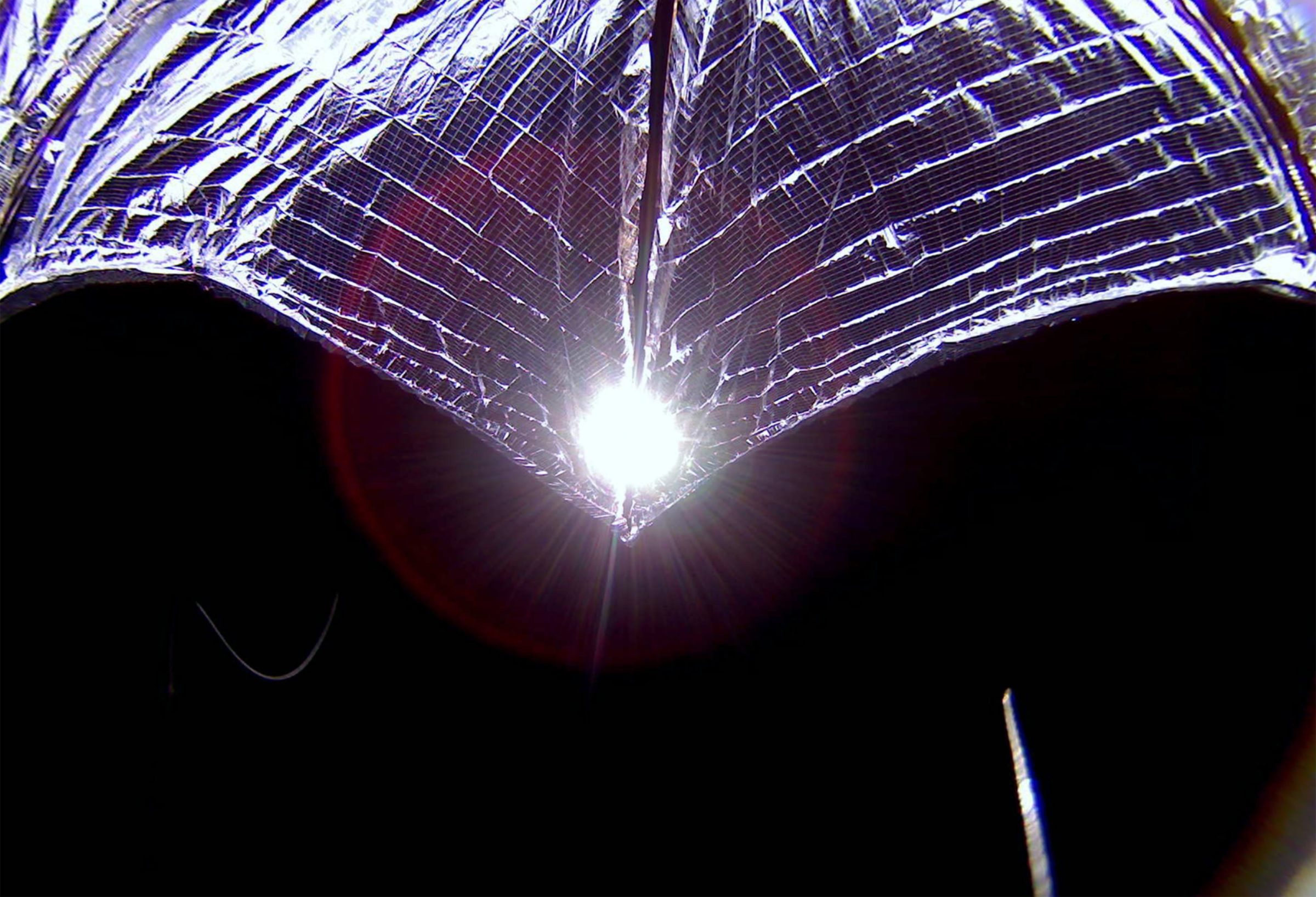Your Impact: September Equinox 2019
LightSail 2 Demonstrates Flight by Light
What a journey! What a success! Your LightSail 2 spacecraft is in space, controlling its orbit solely on the power of sunlight.
Along with a few hundred fellow members, I was at the night launch of LightSail 2 on 25 June 2019. A SpaceX Falcon Heavy rocket took us to orbit. It was spectacular.
One week later, our CubeSat deployed and began its adventure in space. Three weeks after that, we were sailing! As I write, LightSail 2 is building orbital altitude by hundreds of meters per day.
LightSail 2 is part of our legacy and a dream come true. Back in the 1970s, as comet 1P/Halley was on its way toward the Sun, our founders Carl Sagan, Bruce Murray, and Louis Friedman advocated for a solar sail mission to catch up with it. Carl showed the idea to Johnny Carson on The Tonight Show. It was an inspiring concept, but it never got off the drawing board.
Then, in 1999, The Planetary Society, partnering with Russian space companies and Ann Druyan’s Cosmos Studios, began work on the Cosmos 1 solar sail. Cosmos 1 could have been the first demonstration of solar sailing, but the rocket failed, and the spacecraft ended up in the sea.
We might have given up on the dream were it not for all of you—our members. You responded with a resounding “try again,” and now we’re sailing in space. Thanks to you, LightSail 2 is flying and proving the concept of flight by light. As a member, you appreciate how hard it is to design, build, test, retest, and finally fly a space mission. For the first time in history, we demonstrated fast tacking, twice in every 100-minute orbit, near Earth—with a spacecraft propelled by sunlight. LightSail 2 is extraordinary—and, we hope, precedent setting. Your passion and commitment got us here. Together, we have accomplished something wonderful. Sail on!

For more about LightSail, including videos, detailed stories, more images, and how to track LightSail 2, go to sail.planetary.org.






LightSail 2 Captured the World’s Attention

Congratulations to the Planetary Society! LightSail 2 Is Officially Soaring on Sunlight! @exploreplanets https://t.co/Uua1SNFz29
— Jim Bridenstine (@JimBridenstine) August 3, 2019
Congrats to the single boat #LightSail2 space regatta by the @exploreplanets! Imagine the missions we at NASA Science could do with solar sail technology - a space weather sentinel, a solar polar mission, etc. #imagine #explore https://t.co/MKUSU4wYc1
— Thomas Zurbuchen (@Dr_ThomasZ) July 24, 2019
I know my dad would be thrilled about #lightsail2
— Sasha Sagan (@SashaSagan) July 26, 2019
Science Advocacy Successes
Planetary Society members impact legislative and budgetary priorities in the U.S. Congress. Thanks to your advocacy efforts, The Planetary Society secured our top legislative priorities in the NASA fiscal year 2020 budget passed by the House of Representatives. The legislation rejected the White House’s proposed cancellations of the Wide-Field Infrared Space Telescope (WFIRST), Earth Science missions; and NASA’s education program; supported the start of a Mars sample return mission, and continued development of the asteroid-hunting NEOCam spacecraft. Congress also bumped NASA’s top line by 4 percent to $22.3 billion. Chief Advocate Casey Dreier organized this advocacy effort with Chief of Washington Operations Brendan Curry. The thousands of Society members who contacted their congressional representatives in support of these issues led us to success.
Notably absent from the House’s bill was funding for Project Artemis, the new effort to land humans on the Moon by 2024. Action now shifts to the Senate, which had yet to release its version of NASA’s budget by the time this issue went to press. Up-to-date information is available at planet.ly/fy2020.
How Much Did Apollo Cost?

Your membership supported new independent financial analysis that revealed that Project Apollo cost $264 billion in 2019 dollars. The total increases to $288 billion when related efforts such as robotic lunar probes and Project Gemini are included. This analysis provides critical historical context for evaluating modern political commitments to human exploration efforts.
The Planetary Society released the raw data behind this project to encourage open discussion and further analysis. Explore the cost of Apollo with beautiful charts and year-by-year and program-by-program cost breakdowns at planet.ly/apollocost.
A Moon Shot for PlanetVac
PlanetVac, a Planetary Society member-funded technology that simplifies the process of collecting samples from other worlds, has been chosen for a possible Moon flight! NASA selected PlanetVac and 11 other science and technology payloads to join its Commercial Lunar Payload Services program, which will send a series of robotic spacecraft to the Moon. In 2021 and 2022, 3 commercially built spacecraft are scheduled to land on the Moon. You helped fund 2 tests of PlanetVac in 2013 and 2018 in partnership with Honeybee Robotics, which builds the device. You saw the promise of PlanetVac and supported its development. Thank you! planet.ly/planetvac
Planetary Society members like you make this work possible. Thank you!
Support our core enterprises
Your support powers our mission to explore worlds, find life, and defend Earth. You make all the difference when you make a gift. Give today!
DonateThe Planetary Report • September Equinox
Help advance space science and exploration! Become a member of The Planetary Society and you'll receive the full PDF and print versions of The Planetary Report.


 Explore Worlds
Explore Worlds Find Life
Find Life Defend Earth
Defend Earth





